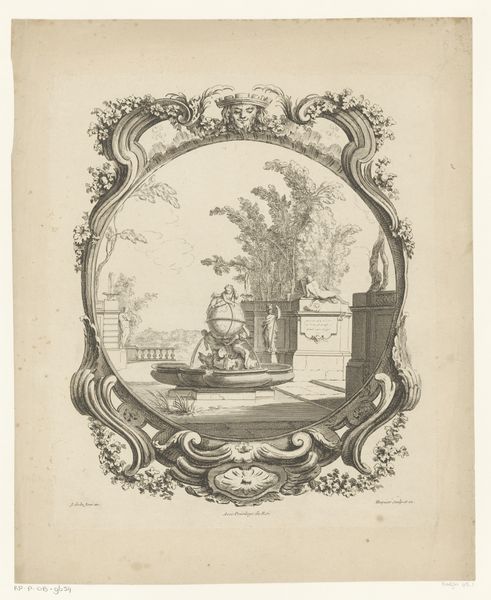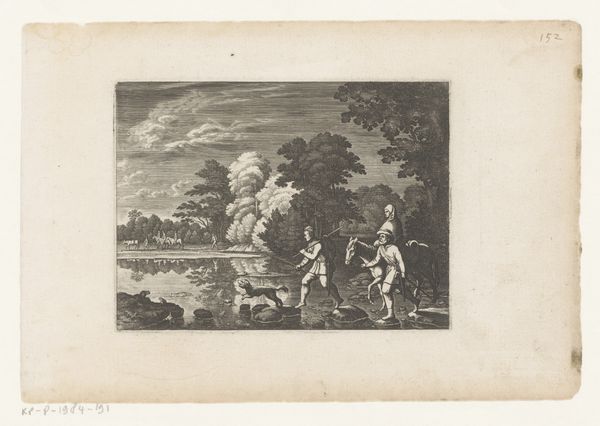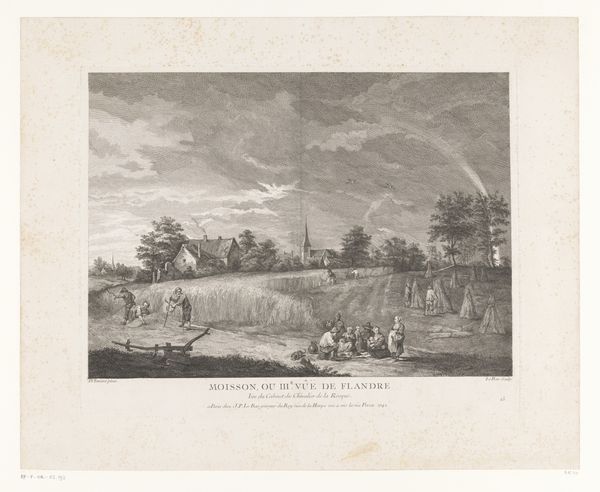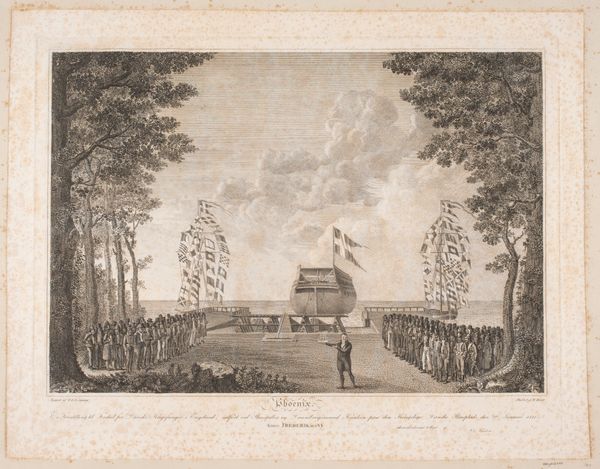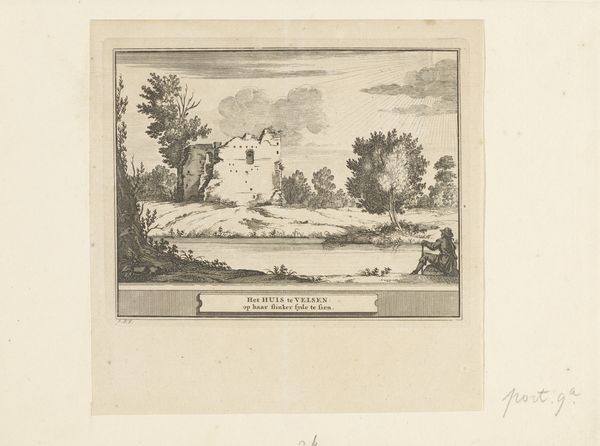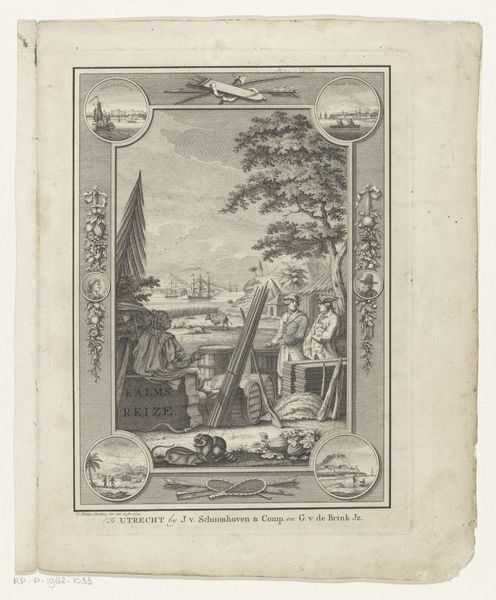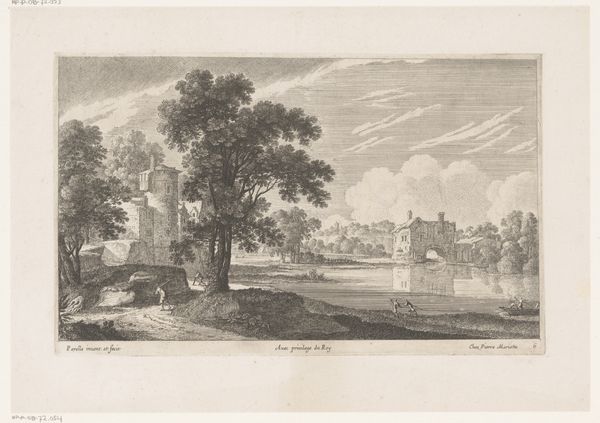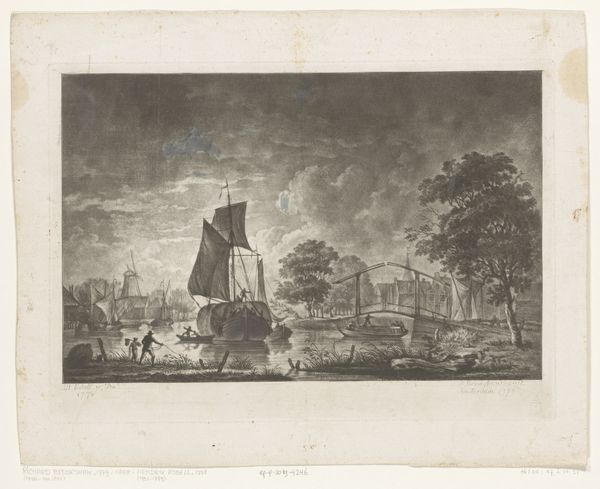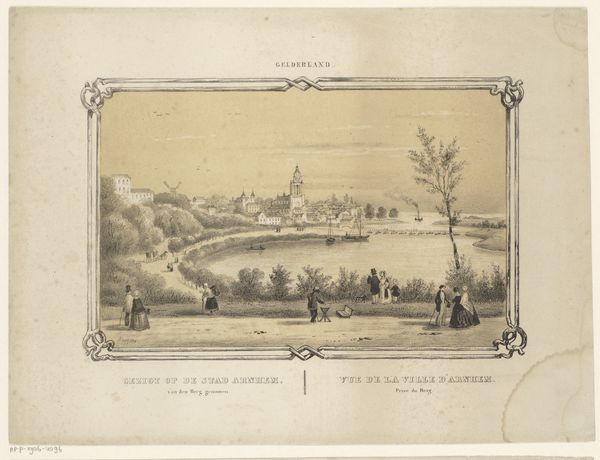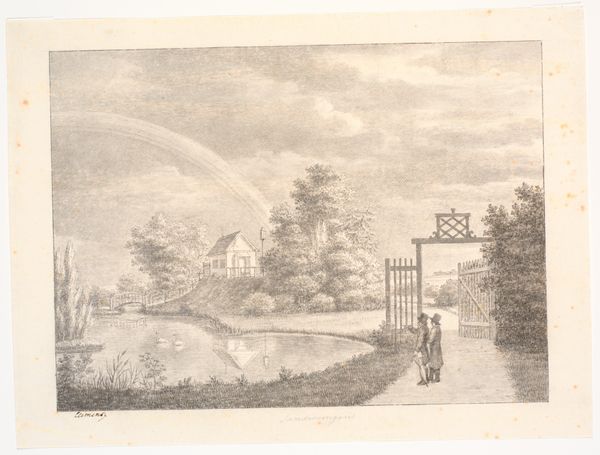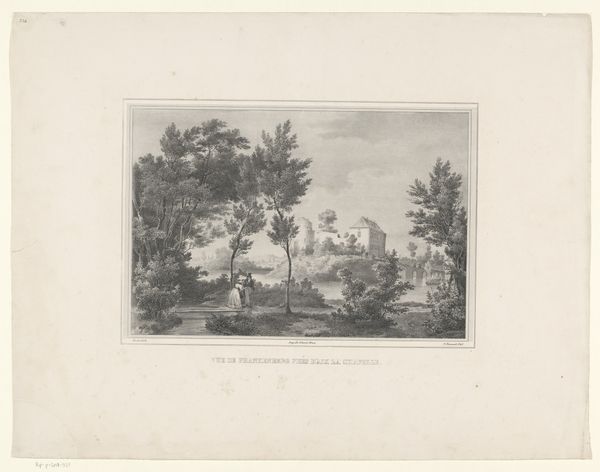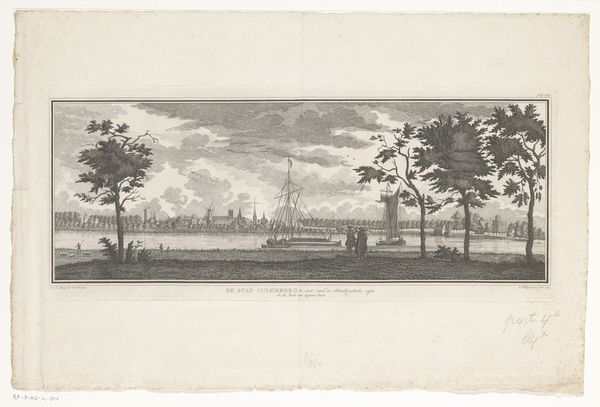
print, engraving
#
baroque
# print
#
landscape
#
classical-realism
#
cityscape
#
engraving
Dimensions: height 236 mm, width 279 mm
Copyright: Rijks Museum: Open Domain
Curator: Let’s turn our attention to "Neptunusbeeld in de tuin van het Gouverneurspaleis te Batavia," an engraving dating back to 1744. Editor: It evokes a real sense of distance, a kind of untouchable, idealised colonial life. There is a vastness to it, almost echoing emptiness. Curator: It is a print showing the garden of the Governor's Palace in Batavia, now Jakarta, depicting a statue of Neptune as a key feature. Look at the surrounding formal gardens, laid out in what was likely a fashionable European style, complete with statues. There's a statement being made about power and order here. Editor: Indeed, and what’s really telling is how the scene contrasts idealized European forms against a background of a land forcibly occupied. Neptune, the Roman god of the sea, becomes a symbol of colonial power, of controlling not just land, but the very waterways themselves, the trade routes. It highlights an inherent imbalance and claim of dominance through cultural imposition. Curator: The image draws from a tradition of classical idealism, referencing established European aesthetics to assert a certain cultural legitimacy in a distant territory. Even the clouds overhead seem deliberately placed to emphasize order and harmony. Note the calculated balance. Editor: And within this manufactured Arcadia, the indigenous population is glaringly absent. It underscores the complex layering of visibility and erasure within colonial representation, doesn't it? A garden as a stage for performing authority and justifying occupation, which seems both beautiful and incredibly sinister at once. Curator: Indeed, that tension is very present. The artwork gives us a window into the mindset of the colonizers and their efforts to transplant and impose their cultural values, isn't it? It’s fascinating to consider how these symbolic landscapes functioned as instruments of cultural projection. Editor: Yes, examining its cultural footprint offers powerful insights into the relationship between identity, place, and power within colonial contexts. I look at this and immediately think of the landscapes of dispossession and unequal exchange this scene camouflages.
Comments
No comments
Be the first to comment and join the conversation on the ultimate creative platform.
